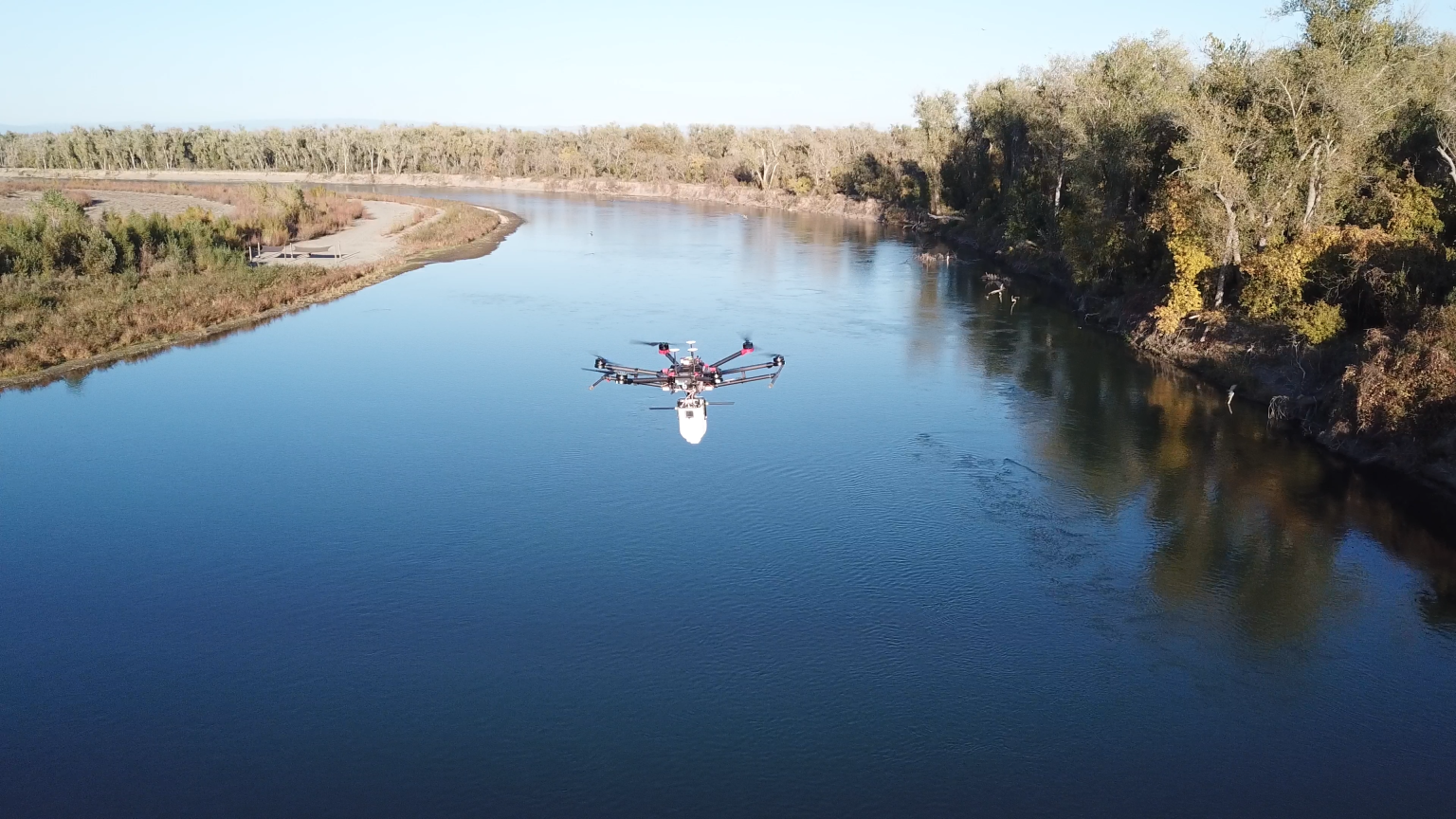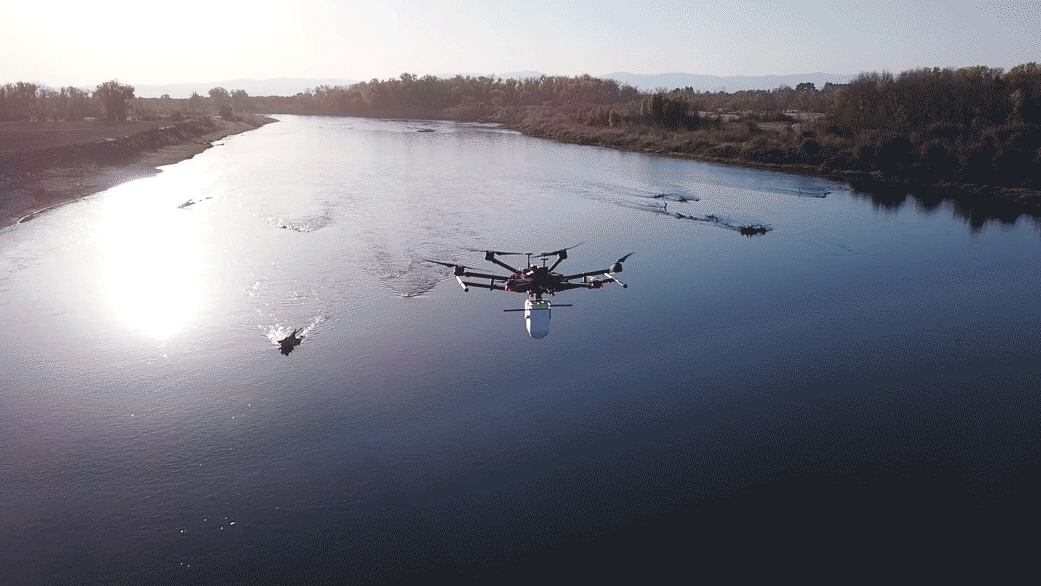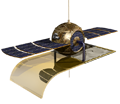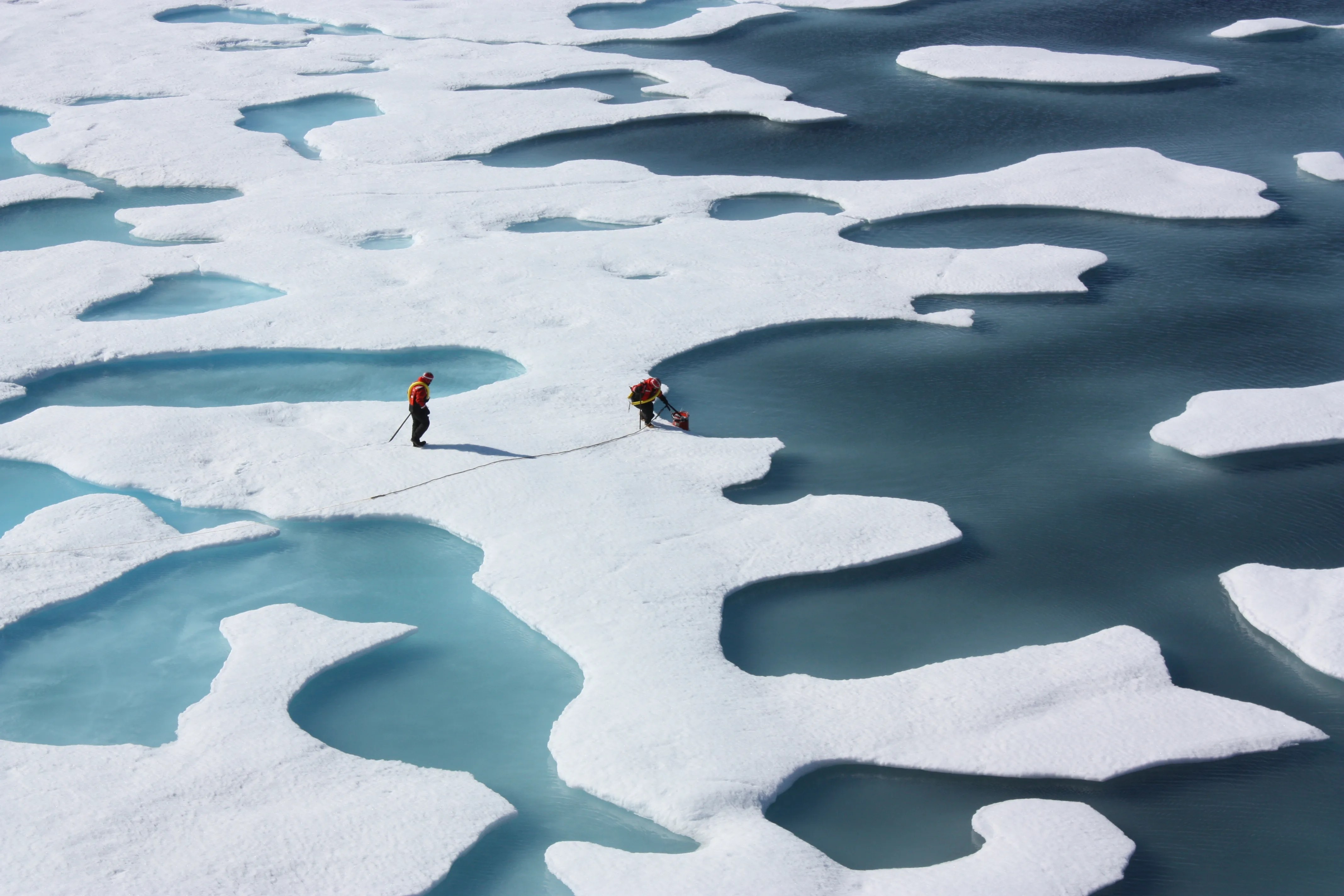A team of scientists and engineers at NASA and the U.S. Geological Survey (USGS) collaborated to see if a small piloted drone, equipped with a specialized payload, could help create detailed maps of how fast water is flowing. Rivers supply fresh water to our communities and farms, provide homes for a variety of creatures, transport people and goods, and generate electricity. But river flows can also carry pollutants downstream or suddenly surge, posing dangers to people, wildlife, and property. As NASA continues its ongoing commitment to better understand our home planet, researchers are working to answer the question of how do we stay in-the-know about where and how quickly river flows change?
NASA and USGS scientists have teamed up to create an instrument package – about the size of a gallon of milk – called the River Observing System (RiOS). It features thermal and visible cameras for tracking the motion of water surface features, a laser to measure altitude, navigation sensors, an onboard computer, and a wireless communications system. In 2023, researchers took RiOS into the field for testing along a section of the Sacramento River in Northern California, and plan to return for a third and final field test in the fall of 2024.
“Deploying RiOS above a river to evaluate the system’s performance in a real-world setting is incredibly important,” said Carl Legleiter, USGS principal investigator of the joint NASA-USGS StreamFlow project. “During these test flights we demonstrated that the onboard payload can be used to make calculations – do the analysis – in nearly real-time, while the drone is flying above the river. This was one of our top-tier goals: to enable minimal latency between the time we acquire images and when we have detailed information on current speeds and flow patterns within the river.”
To realize this vision for onboard computing, the team uses open-source software, combined with their own code, to produce maps of water surface velocities, or flow field, from a series of images taken over time.
“You might think that we need to be able to see discrete, physical objects – like sticks or silt or other debris as they move downstream – to estimate the flow velocity, but that’s not always the case, nor is it always possible,” said Legleiter. “Using a highly-sensitive infrared camera, we instead detect the movement of subtle differences in the temperature of water carried downstream.”
Those same tiny temperature differences also appear wherever there are undulations – like at the boundary between the air and the water or ice below. Knowing this, NASA members of the StreamFlow team used this phenomenon to their advantage when developing methods for possible future landed planetary missions to navigate at distant and hard-to-see environments, including Europa, the icy moon orbiting Jupiter.
Our technology can precisely track the static surface of icy terrain while flying over it, or a moving surface, like water, while hovering above it to keep the spacecraft safe while gathering valuable data

uland wong
Co-investigator and NASA lead of the StreamFlow Project
“Icy surfaces present challenging visual conditions such as lack of contrast,” said Uland Wong, co-investigator and NASA lead of the StreamFlow project at NASA’s Ames Research Center in California’s Silicon Valley. “Our technology can precisely track the static surface of icy terrain while flying over it, or a moving surface, like water, while hovering above it to keep the spacecraft safe while gathering valuable data.”
To prepare for the Sacramento River field tests, the NASA team built a robotics simulator to run thousands of virtual drone flights over the Sacramento River test site using flow fields modeled by USGS. These simulations are helping the team create intelligent software capable of selecting the best routes for the drone to fly and ensuring efficient use of limited battery power.
The next step in the partnership is for NASA to develop techniques for making the system more autonomous. The researchers want to use calculations of river flows – performed onboard in real time – to guide where the drone should fly next.
“Does the drone drop down to get better resolution data about a particular location or stay high and capture a wide-angle view,” posed Wong. “If it identifies areas that are flowing particularly fast or slow, could the drone more quickly detect areas of flooding?”
The USGS currently operates an extensive network of thousands of automated stream gauges and fixed cameras installed on bridges and riverbanks to monitor river flows in real-time across the country.
“Drones could enable us to make measurements in so many more areas, potentially allowing our network to be larger, more robust, and safer for our technicians to monitor and maintain,” said Paul Kinzel, StreamFlow co-investigator at USGS. “Drones could help keep our people and equipment out of harm’s way in addition to telling us how the environment is changing over time in as many locations as possible.”
For more information about how NASA improves life on Earth through climate and technological innovations, visit:
The StreamFlow project is a collaboration between researchers with the USGS’s Hydrologic Remote Sensing Branch, Unmanned Aircraft Systems engineers with the USGS National Innovation Center, and scientists in the Intelligent Robotics Group at NASA Ames. The Streamflow payload concept was demonstrated through research initially seeded by a grant from the USGS National Innovation Center and is now supported by NASA’s Advanced Information Systems Technology program, which is managed by the agency’s Earth Science Technology Office. The field tests were conducted in collaboration with the National Oceanographic and Atmospheric Administration (NOAA) Southwest Fisheries Science Center, which helped collect direct field measurements of the river’s flow velocity and granted access to the field site, which is owned by the Nature Conservancy.































